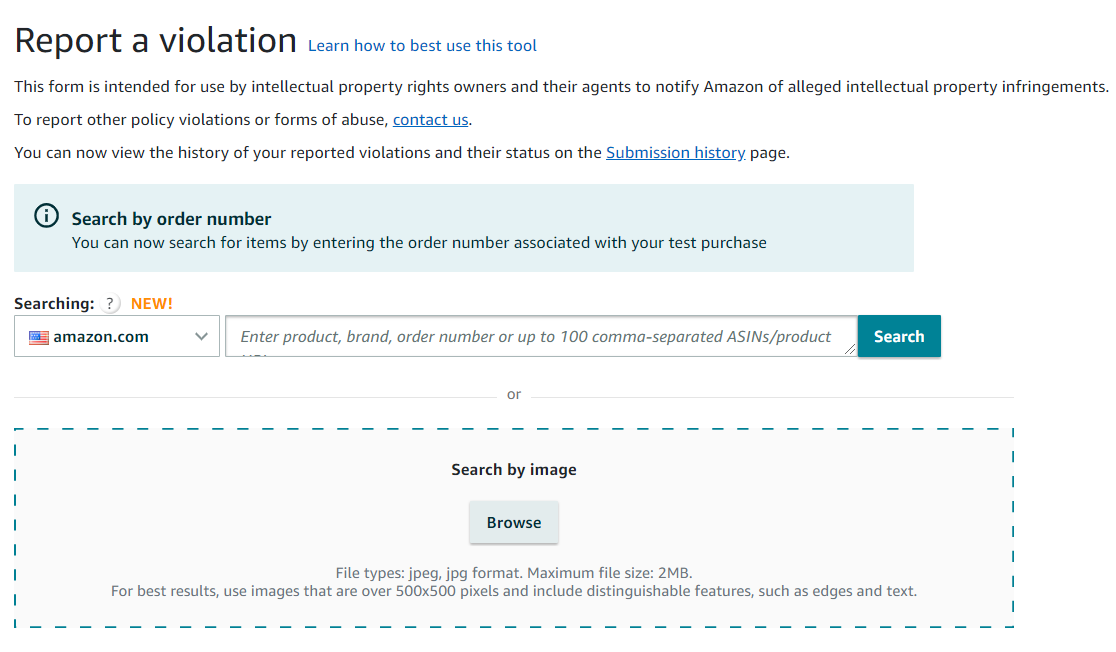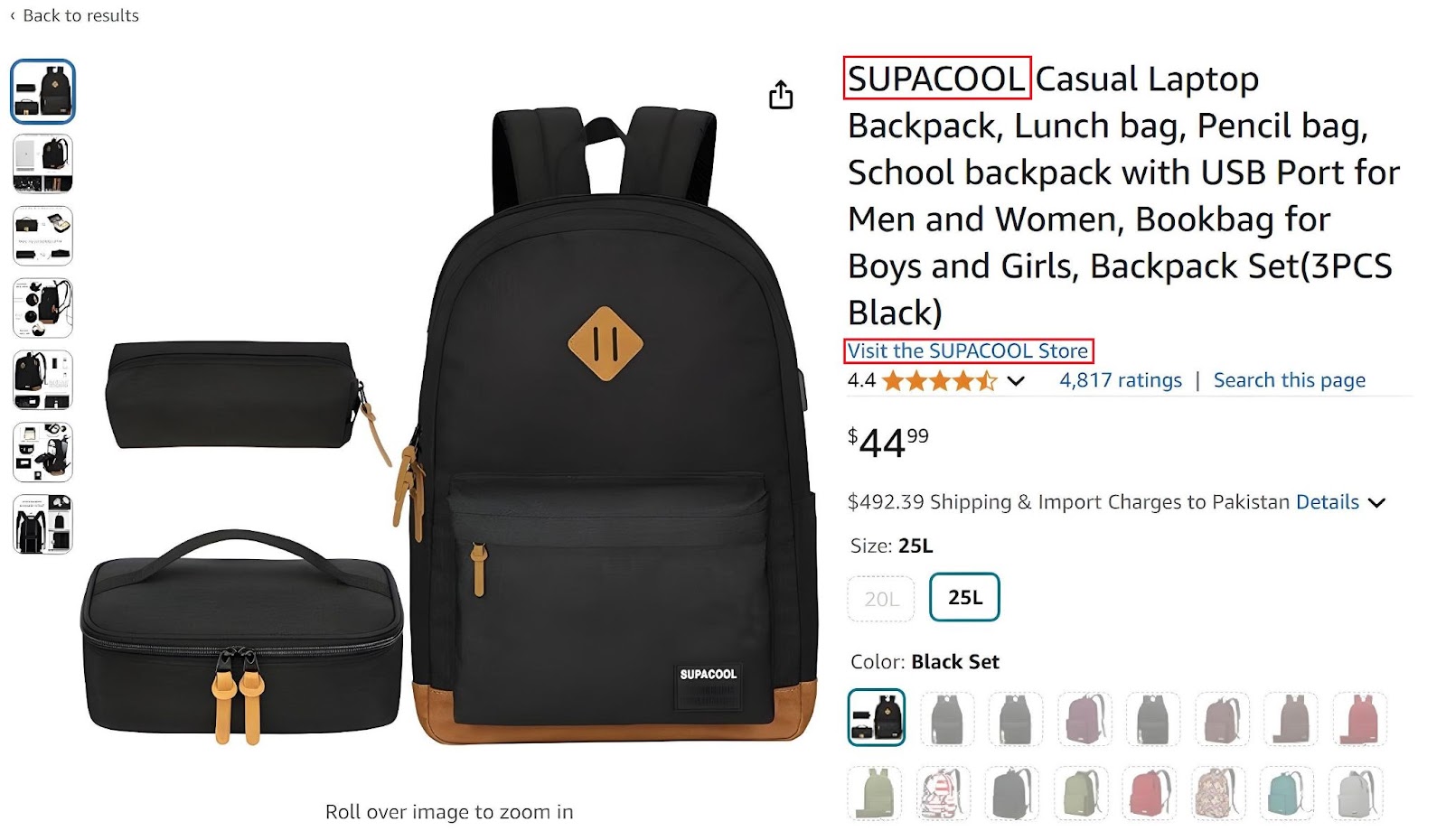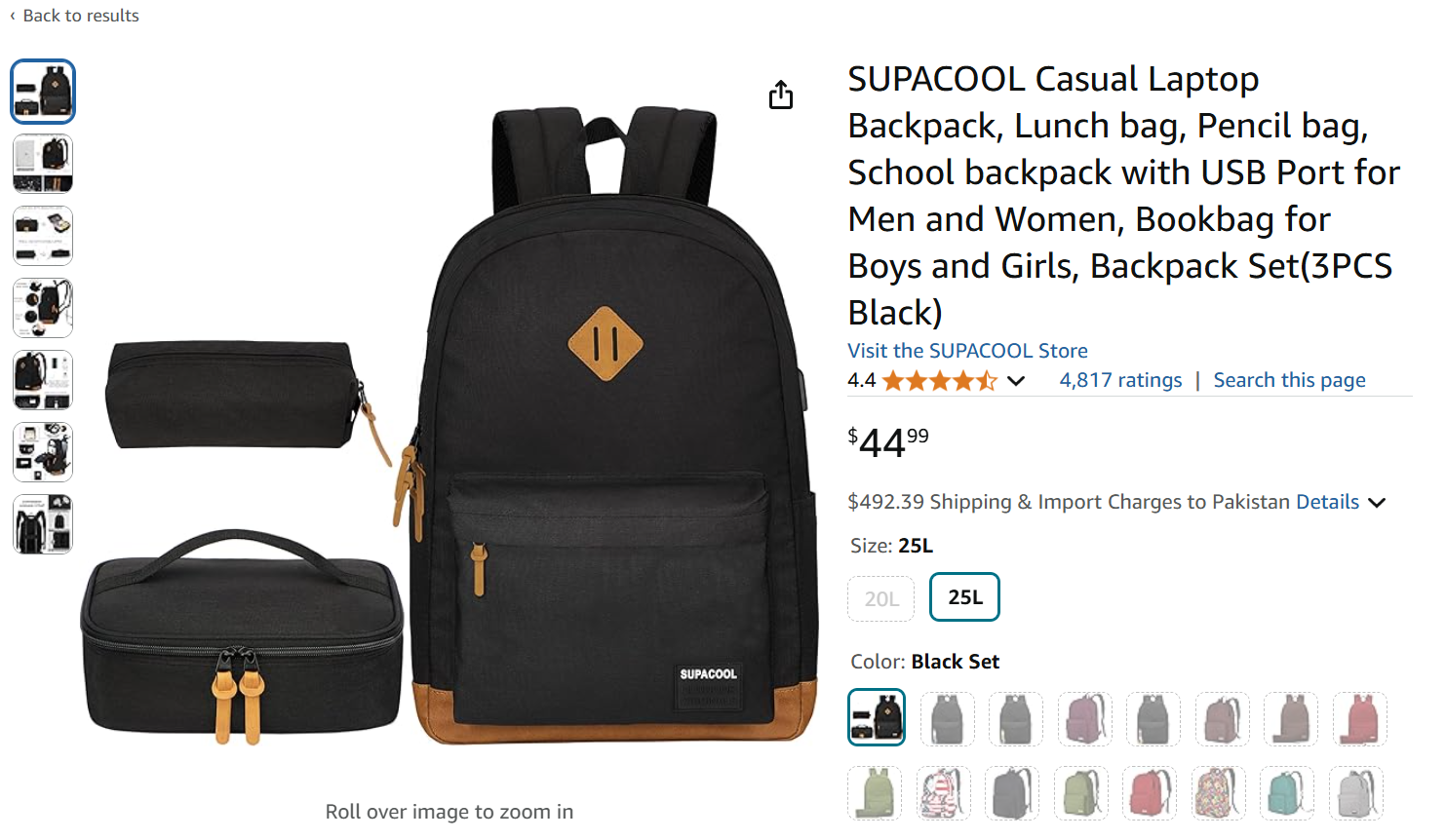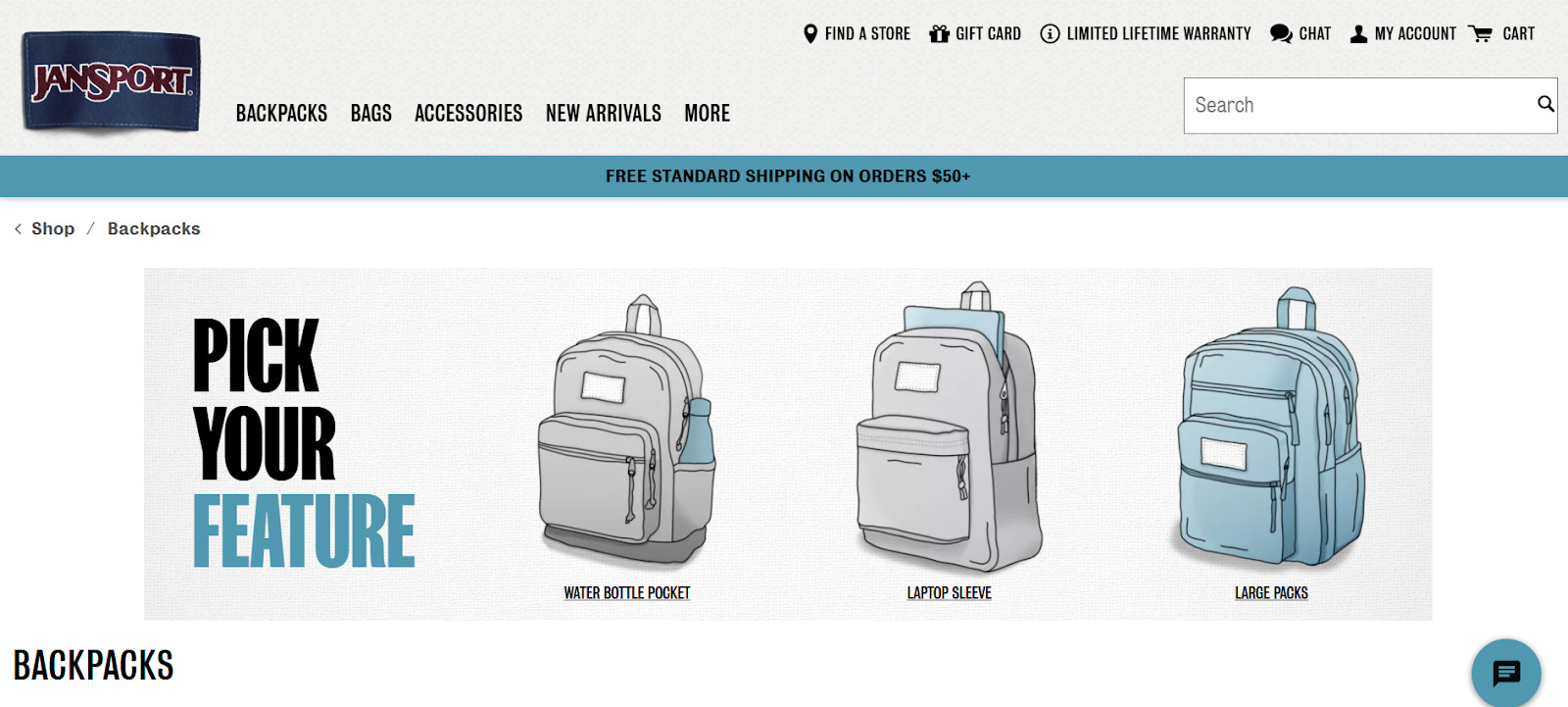Amazon is the go-to online marketplace for millions of shoppers worldwide, with 2.7 billion monthly global visitors. But where there’s opportunity, there are also people looking to exploit it. That’s where Amazon listing hijackers come in.
If you’re an Amazon seller, hijackers can be a nightmare. They steal your hard work, sell counterfeit or low-quality versions of your product, and ruin your brand reputation. The good news? You can fight back.
In this guide, we’ll break down what Amazon listing hijacking is, how to spot it, and the steps you can take to protect your Amazon business against it.
What is Amazon Listing Hijacking?
Amazon listing hijacking happens when unauthorized sellers list a counterfeit or similar version of your private-label product on your listing. These hijackers often price their knockoffs lower than your original product to win the Buy Box, which allows them to steal your sales and damage your brand.
Private-label sellers are most vulnerable to Amazon listing hijacking because they create unique products under their own brand name to avoid direct competition. When hijackers invade their listings, it becomes frustrating to prove their ownership and regain control.
How to Identify a Hijacked Listing
Hijackers can be sneaky, but there are detectable signs that your listing has been compromised. Here are some major indicators of Amazon listing hijacking:
- More than one seller on your listing: If your product is private-labeled, you should be the only seller.
- Buy Box ownership loss: If you suddenly lose the Buy Box without making changes to your pricing or fulfillment, a hijacker might be at play.
- Bad reviews from customers: If you see reviews complaining about defects you know don’t exist in your product, a counterfeit version may be circulating.
- Different seller name and fulfillment details: Check if the product is being shipped and sold by an unknown seller.
Also Read: Amazon Buy Box: What is it and How to Win It?
The Impact of Hijacking on Your Business
A hijacked listing doesn’t just take away sales; it can damage your brand in several ways:
- Lost revenue: Customers unknowingly buy from the hijacker, diverting money away from your business.
- Poor customer experience: Shoppers who receive a fake or subpar product may blame you.
- Negative reviews: Fake products often lead to bad reviews, which can lower your overall rating and make it harder to sell in the future.
Also Read: Amazon Negative Feedback Removal Secrets That Most Sellers Don’t Know
How to Remove a Hijacker from Your Amazon Listing
Time is of the essence when dealing with Amazon listing hijackers. Here’s how you can act fast:
1. Send a Cease and Desist Letter
The quickest way to start is by directly contacting the hijacker and demanding they stop selling your product.
- Go to the hijacker’s seller page on Amazon.
- Click Ask a Question and select An Item for Sale.
- Choose a Question about a product and paste your cease and desist message.
- Politely but firmly warn them that you will take legal action if they don’t remove their listing.
You can find cease and desist letter templates online or consult a lawyer to draft one.
2. Report the Infringement to Amazon
If the hijacker ignores your letter, escalate the issue by reporting them to Amazon. The Amazon Report Infringement Form is meant for intellectual property rights owners and their agents to report issues such as patent, copyright, and trademark infringement. However, the form allows only 1,000 characters and does not allow any attachments.

You need to provide evidence that you are the rightful owner of the listing, such as your brand trademark or Amazon Brand Registry information. After explaining how the hijacker is violating Amazon’s policies, submit your claim and wait for Amazon’s response.
3. Purchase the Counterfeit Product and Gather Evidence
One of the most effective ways to prove an infringement is to buy the counterfeit product yourself and document the differences. For the best results, purchase the product before taking any other action, such as sending a cease and desist letter or submitting a trademark infringement claim, because then the hijacker won’t ship the product to you. You can follow these steps:
- Order the hijacker’s product.
- Take detailed photos comparing their product to yours.
- Note differences in quality, branding, or packaging.
Depending on what you find, you’ll need to submit one of two forms:
- If the counterfeit product uses your brand name and logo, submit the Report Infringement Form.
- If the counterfeit product is listed under a different brand name on your product listing, submit the Violation Form.

Also Read: Understanding IP Violations on Amazon: An Ultimate Guide
Proactive Strategies to Prevent Amazon Listing Hijacking
Instead of just reacting, take proactive steps to protect your listings before hijackers strike.
1. Enroll in Amazon Brand Registry

The Amazon Brand Registry program is one of the most effective ways to prevent Amazon hijackers. You can apply if you have a registered text- or image-based trademark from one of the following countries: the US, Brazil, Canada, Mexico, Australia, India, Japan, France, Germany, Italy, Spain, the Netherlands, Turkey, Singapore, Saudi Arabia, Sweden, the UK, the EU, and the United Arab Emirates.
Your application, which you can start via your Amazon Seller or Vendor account, must include your brand name, trademark registration number, and relevant product categories. If the process seems daunting, you can seek assistance from professional Brand Registry consulting services to ensure a smooth application.
2. Use Amazon’s Anti-Counterfeit Programs
Amazon offers specialized programs to help brand owners fight counterfeiting and protect their listings from unauthorized sellers. Enrolling in these programs provides an added layer of security against hijackers and counterfeiters.
- Amazon Transparency Program: This program assigns unique tracking codes to each product unit, which ensures that only authentic items are shipped to customers. Transparency codes allow Amazon to verify the legitimacy of a product before it reaches the customer, making it significantly harder for hijackers to sell counterfeit versions.
- Project Zero: This is a self-service counterfeit listing removal tool provided by Amazon. It uses machine learning and brand-provided data to detect and remove unauthorized listings before they impact sales. By enrolling in Project Zero, sellers gain more control over their brand’s presence on Amazon.
3. Imprint Your Brand Logo on the Products

One of the most effective ways to prevent Amazon listing hijacking is by making your product and packaging unique. A well-branded product is harder to replicate, reducing the chances of counterfeiters successfully hijacking your listing.
- Imprint or engrave your logo directly onto your product instead of using removable labels or stickers. This makes it more difficult for hijackers to create a convincing replica.
- Use custom packaging with distinct designs, colors, or QR codes that customers can scan to verify authenticity. Unique packaging makes it easier for buyers to distinguish your brand from counterfeit versions.
- Include a brand insert with a thank-you note, warranty information, or a QR code linking to your website. This not only reinforces brand identity but also allows you to guide customers to your official channels, ensuring they recognize and trust your product.
4. Bundle Your Products

Bundling is an effective strategy for deterring hijackers because it requires them to replicate the exact product combination listed under your ASIN. This extra complexity discourages counterfeiters from attempting to hijack your listing.
For example, instead of selling a single backpack, you could create a package that includes a backpack, a lunch bag, and a pencil bag. Ensure that the bundled products complement each other and add value for the customer.
5. Sell on Your Own Website

Establishing an official website for your brand not only increases credibility but also serves as a reference point for Amazon to verify your ownership in case of disputes. A dedicated website allows you to showcase your products, interact with customers, and build a loyal following outside of Amazon.
If you don’t want to sell directly through your website, you can create a product showcase page with links directing customers to your Amazon listings.
6. Monitor Your Listings Regularly
Consistent monitoring of your listings can help you identify hijackers before they cause significant damage. The sooner you detect an unauthorized seller, the faster you can take action to remove them.
- Amazon Seller Central Reports provide detailed insights into your sales and Buy Box performance. Regularly reviewing these reports can help you spot sudden changes that may indicate hijacking activity.
- Third-party monitoring services like Helium 10 or AMZAlert can automate the process by tracking your listings 24/7 and sending alerts if unauthorized sellers appear. These tools can save time and help you act quickly to protect your brand.
By implementing these strategies and staying vigilant, you can minimize the risk of Amazon listing hijacking and safeguard your brand’s reputation and revenue.
Final Takeaway
By implementing these strategies and staying vigilant, you can minimize the risk of Amazon listing hijacking and safeguard your brand’s reputation and revenue. Protecting your listings requires ongoing effort, and taking proactive steps can save you from future losses. It’s crucial to stay informed, act swiftly, and use Amazon’s tools to ensure your brand remains secure and successful in the competitive marketplace.
Got More Questions?
Act quickly by sending a cease and desist letter to the hijacker, reporting the infringement to Amazon, and gathering evidence by purchasing the counterfeit product.
Use Amazon’s Report Infringement Form if the counterfeit product uses your brand name and logo. If the product is listed under a different brand, submit a Violation Form.
You can send a cease and desist letter, file a trademark infringement claim, or take legal action through an attorney specializing in intellectual property rights.
Amazon has strict policies against counterfeit products and unauthorized sellers, offering programs like Brand Registry, Transparency, and Project Zero to help protect legitimate sellers.
Enrolling in the Amazon Brand Registry gives you greater control over product listings by granting access to tools for reporting violations and eligibility for programs like Project Zero and the Transparency Program.
Regularly check your listings in Amazon Seller Central, use third-party monitoring tools like Helium 10 or AMZAlert, and watch for sudden Buy Box losses or suspicious seller activity.






